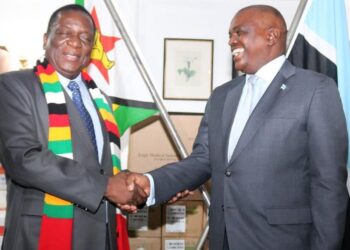Zimbabweans are growing increasingly frustrated as ZESA, the country’s power utility, imposes longer hours of loadshedding blackouts despite an apparent recent boost of 300 megawatts (MW) to the grid.
Residents, who were hopeful that the extra power would ease their situation, are now questioning why power cuts have worsened instead of improving.
The mounting frustration has led many to social media, where they’re voicing their concerns and calling for transparency from ZESA.
With outages now lasting up to 16-18 hours daily, people are demanding explanations for this unexpected development.
On ZESA’s social media pages, Zimbabweans have not held back, directly addressing the Zimbabwe Power Company (ZPC), a subsidiary of ZESA responsible for power generation.
Many are questioning the accuracy of the electricity generation data and demanding to know if the reported 300 MW addition is actually reaching consumers.
Twitter user Godfrey Shumba shared his disbelief, writing,
“Every time we generate more power, loadshedding increases. This is shocking.”
His comment reflects the frustration of citizens who feel their daily lives are being severely disrupted by these outages.
Allan Shoriwa expressed a similar sentiment.“To us, it’s the same – no electricity. From the day you added 300 MW, it’s even worse,” he posted, suggesting that power outages have grown more severe since the announcement of increased capacity.
Another frustrated resident, tweeting under the handle @TKawondera, questioned the meaning behind the figures being shared by ZPC.
“Kindly elaborate on what these numbers mean concerning the electricity situation in the country,” he demanded.
‘Are the Figures Even Accurate?’
Doubts around the actual electricity supply are not uncommon, with many Zimbabweans feeling misled by official announcements.
Ezoic
Tendai Forichi, another Twitter user, raised a pointed question on the matter.
“What’s the daily national demand for electricity, and is the 15-hour loadshedding currently experienced in some suburbs proportionate with the current power generation stats?” he asked.
Forichi’s query highlights widespread scepticism about whether the figures given by ZESA truly reflect the reality on the ground.
Ezoic
In addition to doubts about the power supply, others question the regularity of updates from ZESA, claiming they are often vague or fail to address real concerns.
A Twitter user named Father posted, “These updates are not useful. We have blackouts all the time.”
This post echoed a shared sentiment that the information provided lacks transparency and does little to assure residents that the situation will improve.
Growing Calls for Accountability
The situation has led many Zimbabweans to question ZESA’s commitment to transparency and accountability.
For some, the apparent discrepancies in power supply statistics have eroded trust in the institution.
One outspoken critic, tweeting under the name Gonawapotera WaGoveranyika, went as far as labelling ZESA as “the best liars ever,” implying a deep-seated mistrust among citizens.
Amid these mounting grievances, the public is calling for more straightforward communication and reliable statistics that reflect actual conditions.
Many argue that if 300 MW has indeed been added to the grid, there should be a noticeable improvement in power availability. Yet, the reverse seems true, leading people to wonder where the additional power is going.
While ZESA has yet to issue a formal response addressing the questions raised on social media, it remains clear that Zimbabweans want more than just reassurances.
Many are hoping for tangible results that will reduce the hours of loadshedding and bring stability to their daily routines.
In the meantime, residents continue to adapt to the power cuts, with many turning to alternative sources such as solar energy, generators, and gas stoves.
However, with the cost of such solutions being prohibitively high for most, the demand for answers from ZESA remains strong.












